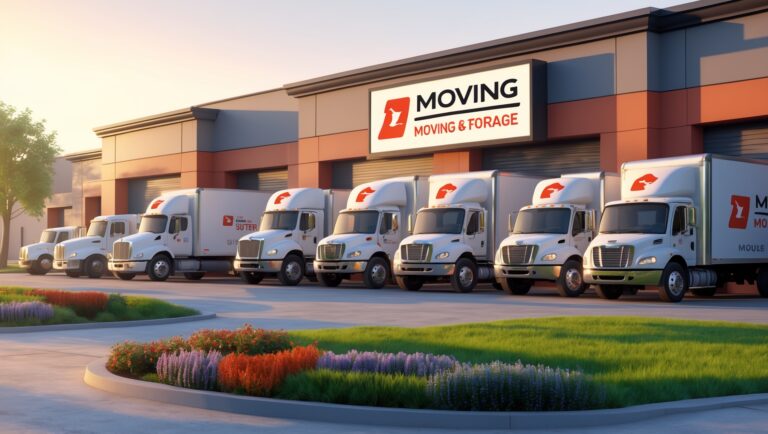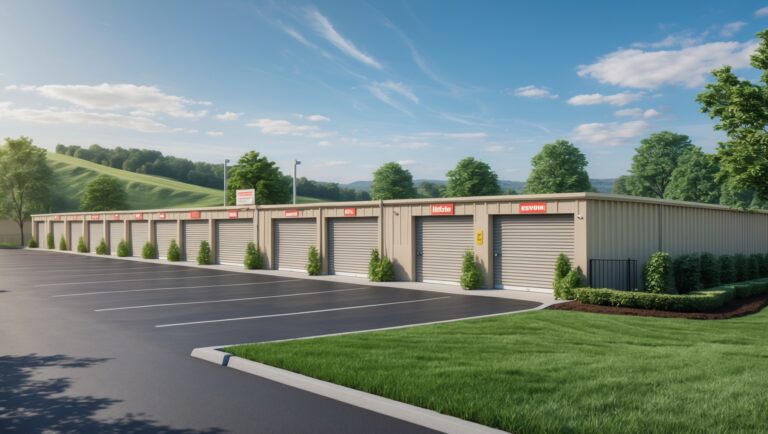Storage Facility Lighting: How to Optimize Safety, Security, and Efficiency
Introduction: Why Lighting Matters for Storage Facilities
Lighting is one of the most overlooked yet crucial aspects of running a storage facility. The right lighting strategy goes far beyond simply illuminating hallways or exterior driveways. It is a foundational element for safety, security, and operational efficiency. Inadequate lighting can be a magnet for criminal activity, increase the risk of accidents, and inflate operational costs through energy inefficiency and maintenance headaches. Conversely, a well-designed lighting system can deter theft and vandalism, improve customer satisfaction, reduce liability, and even help you stand out in a competitive market. In this comprehensive guide, we’ll explore how to optimize your storage facility’s lighting—from initial planning and fixture selection to advanced controls, installation best practices, and ongoing maintenance. Whether you manage a small independent facility or a large multi-site operation, these actionable strategies will help you maximize safety, security, and efficiency while controlling costs.
Assessing Your Current Lighting: The First Step to Optimization
Conducting a Lighting Audit
Before making improvements, it’s essential to understand your current lighting situation. A lighting audit involves systematically evaluating every area of your facility—interior and exterior—to identify shortcomings and opportunities for enhancements.
- Inventory Existing Fixtures: List all lighting types, locations, wattages, and ages. Note any burned-out bulbs or fixtures with recurring issues.
- Measure Light Levels: Use a light meter to check illumination in key areas, comparing results to recommended standards (e.g., 10–20 foot-candles in corridors, 2–5 foot-candles for parking areas).
- Identify Dark Spots: Walk the property at night to pinpoint poorly lit corners, blind spots, or areas with obstructed fixtures.
- Check Controls and Timers: Assess whether sensors, timers, and switches are working optimally or need upgrading.
Common Lighting Deficiencies
- Old, inefficient bulbs (incandescent, halogen, T12 fluorescents)
- Inconsistent light distribution and color temperatures
- Manual switches prone to being left on or off at the wrong times
- Fixtures blocked by storage items or overgrown landscaping
Lighting and Security: Deterring Theft and Vandalism
The Role of Lighting in Crime Prevention
Studies show that well-lit environments are less attractive to criminals. Bright, even lighting exposes suspicious activity and eliminates hiding places, making it easier for cameras to capture clear footage and for staff and customers to spot potential issues.
Best Practices for Security Lighting
- Perimeter Lighting: Install pole-mounted or wall-mounted fixtures to cover all exterior boundaries, entrances, and exits.
- Motion-Activated Lights: Use motion sensors in less-trafficked areas to instantly flood the space with light when movement is detected.
- Lighting for Cameras: Ensure camera fields of view are free from glare or deep shadow. Choose fixtures with diffusers or shields if needed.
- Signage Illumination: Keep facility entry signs and directional markers clearly visible at all hours.
Advanced Security Integration
- Smart Lighting Controls: Integrate lighting with your access control and alarm systems for automated responses to breaches or after-hours access.
- Remote Monitoring: Use Wi-Fi or networked lighting systems to adjust settings and monitor performance from your office or smartphone.
Customer and Staff Safety: Reducing Accidents and Liability
Lighting for Walkways and Corridors
Many storage facility accidents happen due to slips, trips, and falls in poorly lit hallways or stairwells. Consistent, shadow-free lighting is critical—especially where units change elevation, or near ramps and loading docks.
- Install linear LED strips or evenly spaced fixtures along corridors.
- Use higher color rendering index (CRI) bulbs (80+ CRI) to make hazards more visible.
- Avoid overly bright or harsh lights that cause glare or eye fatigue.
Parking Lots and Loading Areas
- Ensure all parking stalls, drive aisles, and loading bays are uniformly lit.
- Install bollard lights or wall packs at entry points and loading zones.
- Consider canopy lights for covered loading areas to eliminate dark pockets.
Choosing the Right Fixtures: Types, Placement, and Features
LED vs. Traditional Lighting
LED (light-emitting diode) technology has revolutionized facility lighting. LEDs offer:
- Energy savings of 50–75% over HID, halogen, or fluorescent bulbs
- Lifespans exceeding 50,000 hours (5–10 years of typical use)
- Minimal maintenance due to fewer burnouts
- Instant-on capability with no warm-up time
- Wide selection of color temperatures (2700K–6500K) to match application needs
Fixture Types and Applications
- Wall Packs: For building exteriors and entryways
- Pole-Mounted Area Lights: For large parking lots and drive aisles
- Linear Strips/Troffer Fixtures: For corridors and indoor common areas
- Bollard Lights: For pathways and pedestrian zones
- Floodlights: For wide-area coverage or special security needs
Specialty Features to Consider
- Integrated Sensors: Occupancy and daylight sensors automatically adjust lighting based on activity and ambient daylight.
- Dimmability: Dimmable LEDs allow you to fine-tune light levels and save energy during off-peak hours.
- Vandal-Resistant Housings: Heavy-duty enclosures prevent tampering and damage in high-risk areas.
- Weatherproof Ratings: Choose fixtures with IP65 or higher for outdoor or wet locations.
Planning Your Lighting Upgrade: Steps and Considerations
Step 1: Set Clear Objectives
Identify your top goals—whether reducing energy costs, improving security, enhancing curb appeal, or minimizing maintenance. These priorities will influence fixture selection and layout.
Step 2: Develop a Lighting Layout
- Map out all areas requiring illumination, including unit corridors, exteriors, parking, offices, and restrooms.
- Calculate required light levels based on usage (see IESNA guidelines for storage facilities).
- Position fixtures to minimize shadows, overlap coverage, and avoid light pollution to neighboring properties.
Step 3: Select Fixtures and Controls
- Choose LED fixtures with appropriate lumen output, beam angles, and mounting options.
- Integrate smart controls, timers, or sensors where practical.
- Standardize fixture types to simplify inventory and maintenance down the road.
Step 4: Budgeting and Rebates
Lighting upgrades can qualify for local utility rebates or tax incentives. Factor in both upfront costs and long-term savings from reduced energy and maintenance. Many facility owners see payback periods of 2–4 years for comprehensive LED retrofits.
Installation: Best Practices for Storage Facilities
Hiring Qualified Professionals
Work with licensed electricians experienced in commercial property lighting. They can advise on code compliance, fixture mounting, wiring, and optimal control integration. Avoid DIY installations, as improper wiring can create safety hazards and insurance issues.
Minimizing Disruption to Operations
- Schedule installations during off-peak hours or stagger work by area.
- Notify tenants in advance about any temporary closures or access changes.
- Ensure clear signage and alternative pathways if needed.
Compliance and Building Codes
Check local and state regulations regarding outdoor lighting, light trespass, and energy efficiency. Many jurisdictions set limits on brightness, fixture direction, and hours of operation for exterior lights. Confirm all installations meet the latest National Electrical Code (NEC) standards.
Energy Efficiency: Reducing Costs and Environmental Impact
Smart Controls and Automation
- Install photocells to turn lights on at dusk and off at dawn automatically.
- Use occupancy sensors in low-traffic areas, such as hallways or bathrooms, to reduce unnecessary runtime.
- Consider advanced lighting management systems for multi-site operations, enabling remote monitoring and scheduling.
Daylighting Opportunities
Where feasible, add skylights or windows in office and common areas to leverage natural light during the day, reducing dependence on electric lighting. Use blinds or diffusers to control glare.
Monitoring and Benchmarking
Track energy usage before and after upgrades to quantify savings. Many smart lighting systems offer built-in reporting and analytics. Use this data to optimize schedules, identify anomalies, and support future upgrades.
Lighting Maintenance: Keeping Systems Reliable and Safe
Routine Maintenance Checklist
- Inspect all fixtures quarterly for dirt, damage, or signs of wear.
- Clean lenses and housings to maintain light output.
- Replace failed bulbs or drivers promptly—never leave dark spots unaddressed.
- Test motion sensors, photocells, and timers at least twice a year.
- Trim back landscaping that could block light or access to fixtures.
Planning for Upgrades and Replacements
Even with long-lasting LEDs, plan for replacement of drivers, sensors, and fixtures as they approach end-of-life. Keep a log of installation dates and warranty terms for each fixture type. Budget for phased replacements to avoid sudden large expenses.
Case Study: How Lighting Upgrades Transformed a Storage Facility
Before: The Challenge
A 300-unit suburban storage facility struggled with frequent break-ins, customer complaints about dark hallways, and escalating energy bills. The property relied on a patchwork of aging fluorescent and metal halide fixtures, many of which were poorly positioned and prone to failure.
After: The Solution
- Replaced all exterior and corridor lights with high-efficiency LEDs, increasing light levels by 50% while reducing energy use by 60%.
- Added motion-activated floodlights to blind spots and entry gates.
- Integrated lighting controls with the facility’s security system for automatic response to alarms.
- Received a $7,500 utility rebate, with total project payback in under three years.
- Reported zero break-ins and a 30% increase in positive customer reviews within 12 months.
Conclusion: Making Lighting a Competitive Advantage
Optimal lighting is more than a utility expense—it’s an asset that directly impacts your storage facility’s safety, security, and customer perception. By systematically assessing your current lighting, identifying weaknesses, and implementing modern solutions such as LED fixtures, smart controls, and routine maintenance, you can create a safer, more inviting environment while reducing costs and environmental impact. Thoughtful lighting upgrades not only deter crime and accidents but also enhance your facility’s curb appeal and reputation, giving you a tangible edge in a crowded market. Remember, the best lighting strategies are proactive and data-driven: don’t wait for a break-in or accident to highlight the need for change. Instead, take charge now with a comprehensive plan that addresses every corner of your property. Your tenants, staff, and bottom line will thank you—today and for years to come.





